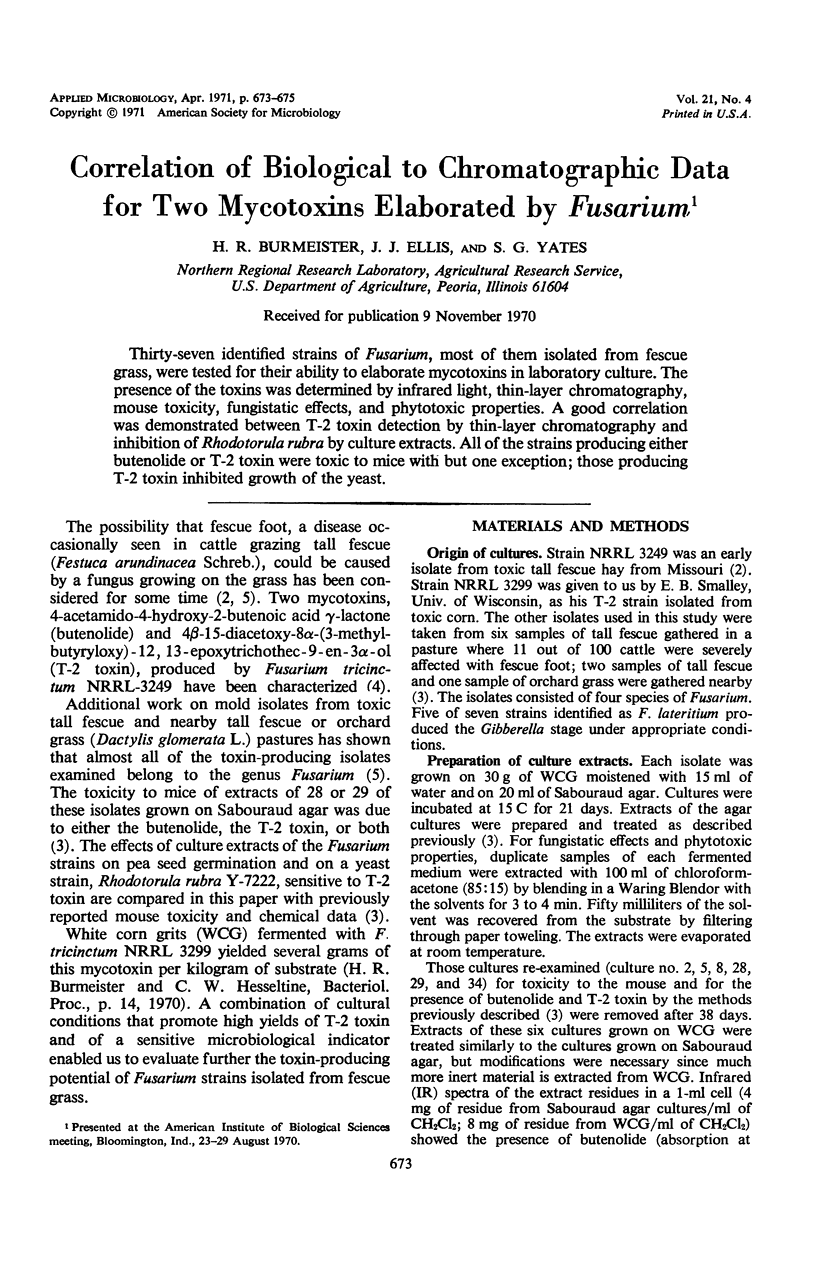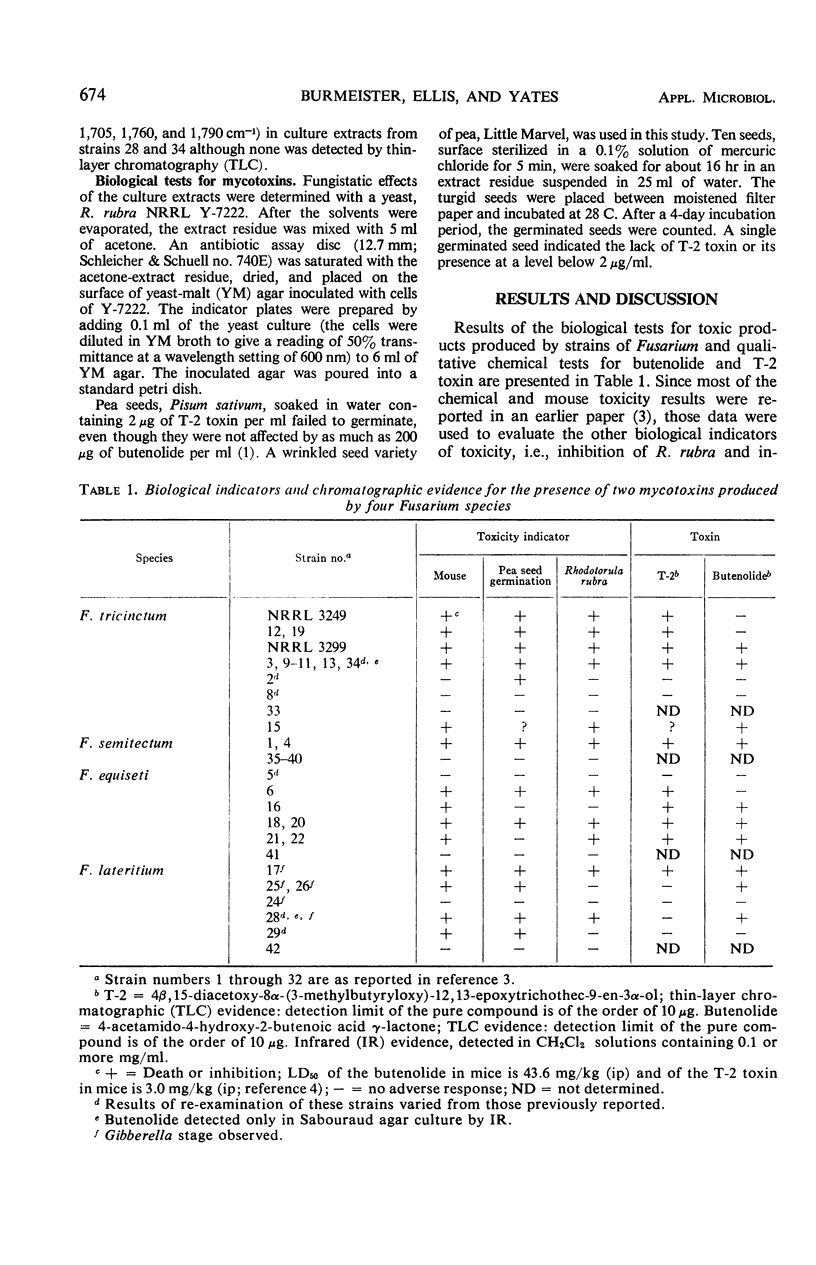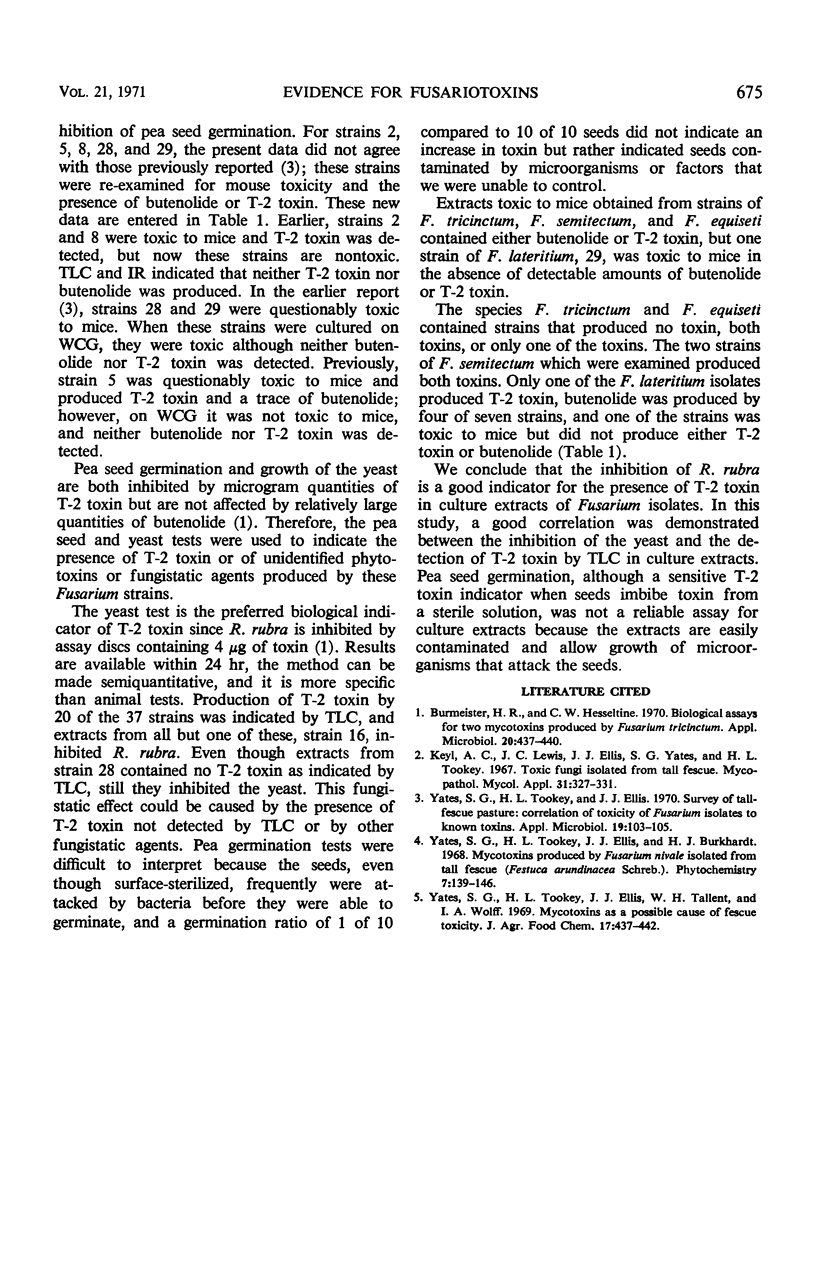Abstract
Thirty-seven identified strains of Fusarium, most of them isolated from fescue grass, were tested for their ability to elaborate mycotoxins in laboratory culture. The presence of the toxins was determined by infrared light, thin-layer chromatography, mouse toxicity, fungistatic effects, and phytotoxic properties. A good correlation was demonstrated between T-2 toxin detection by thin-layer chromatography and inhibition of Rhodotorula rubra by culture extracts. All of the strains producing either butenolide or T-2 toxin were toxic to mice with but one exception; those producing T-2 toxin inhibited growth of the yeast.
Full text
PDF


Selected References
These references are in PubMed. This may not be the complete list of references from this article.
- Burmeister H. R., Hesseltine C. W. Biological assays for two mycotoxins produced by Fusarium tricinctum. Appl Microbiol. 1970 Sep;20(3):437–440. doi: 10.1128/am.20.3.437-440.1970. [DOI] [PMC free article] [PubMed] [Google Scholar]
- Keyl A. C., Lewis J. C., Ellis J. J., Yates S. G., Tookey H. L. Toxic fungi isolated from tall fescue. Mycopathol Mycol Appl. 1967 Apr 28;31(3):327–331. doi: 10.1007/BF02053433. [DOI] [PubMed] [Google Scholar]
- Yates S. G., Tookey H. L., Ellis J. J. Survey of tall-fescue pasture: correlation of toxicity of Fusarium isolates to known toxins. Appl Microbiol. 1970 Jan;19(1):103–105. doi: 10.1128/am.19.1.103-105.1970. [DOI] [PMC free article] [PubMed] [Google Scholar]


